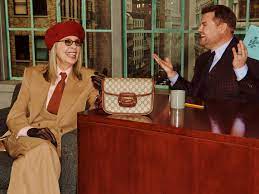Fashion Campaigns
- Lina Vaz

- May 15, 2021
- 2 min read
Updated: May 16, 2021
Isn’t it time to change the narrative?
The most memorable fashion advertising campaigns of all time are marked by controversy, due to their explicit sexual nature: from the renowned Calvin Klein jeans advert with Brooke Shields in 1980, to the infamous Yves Saint Laurent Opium perfume with British model Sophie Dahl, and let’s not forget Tom Ford’s 2003 Gucci advertising campaign, showing a G shaved into model Carmen Kass’s public hair.
It’s a well-known fact, ‘sex sells’, and it will always play an important role in advertising, but shouldn’t we look into other ways of portraying women? In a time marked by purpose-driven brand communications, should’t we go beyond the doll approach?
Vogue Paris actually turned models into dolls for the December/January 2015 issue, quite literally putting women into a box. Rodarte’s latest campaign depicts celebrities and models within a context reminiscent of an old painting, but again, it’s all about looking pretty.
It’s quite significant that the latest Moschino advertising campaign features models as puppets, while this was an innovative way to stand out from the crowd in video presentations, now it becomes almost political.
According to the Office of National Statistics, “women’s wellbeing has been hit harder than men’s during the pandemic”. The work of photographer Miles Aldridge tends to gravitate around women in domestic settings, but subverting them into highly glamorised divas.
Gucci’s creative director, Alessandro Michele, has recreated a late-night talk show to promote the label’s most beloved handbag styles, with celebrities who align with the brand. His video presentations also depicted an aspirational lifestyle, much like Gucci’s latest overture campaign.
Even if it doesn’t make much sense, celebrities usually see film publicity as a necessary burden not as something they enjoy doing, and they don’t really carry bags to talk shows, it’s still a valuable attempt to depict a lifestyle instead of a frozen frame.
Stella McCartney has always been political in her advertising campaigns, making very clear what she stands for. There’s always a strong environmental message of love for the planet.
But even influencers are behaving like models instead of being true to themselves and their actual lifestyle. Obviously each brand needs to promote a particular collection in a way that makes sense to their target audience.
Considering the current dynamic connection with customers through digital data, and the rise of data-driven communication strategies, shouldn’t we start seeing fashion campaigns mirroring women in all their glory?

It needs to go much further than racial and body diversity, to the core of who women are today. They have so many different hats on, and much more choice than their ancestors in terms of their career and personal life.
Donna Karan’s 1992 campaign “In Women We Trust” featuring model Rosemary McGrotha as President was groundbreaking, but without much ripple effect.
Nowadays there are many women leading their own companies as CEOs, especially in the fashion industry, so why is this not depicted in marketing? The sky is the limit!



























Comments